If you’re a nature enthusiast or bird lover, attracting these feathered wonders to your garden can be a delightful and rewarding experience.
Known for their sociable nature and distinctive appearance, Cedar Waxwings are a joy to observe as they flit and flutter among branches, sharing soft, high-pitched calls.
In this comprehensive guide, we’ll uncover how to attract Cedar Waxwings. From understanding their dietary preferences to selecting the right plants and providing a welcoming environment, each step will bring you closer to the mesmerizing company of these beautiful birds.
So, grab your binoculars, prepare to be captivated, and let’s embark on a journey to make your garden a haven for Cedar Waxwings.
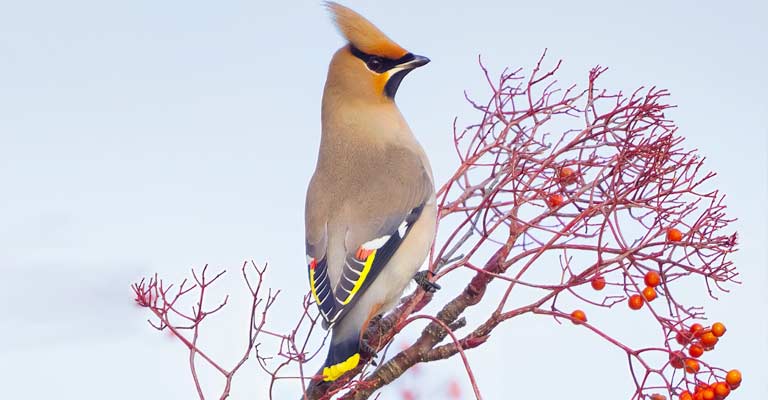
How to Attract Cedar Waxwings to Your Garden?
Cedar Waxwings, with their sleek appearance and distinctive markings, is a delight for bird enthusiasts and nature lovers.
Before embarking on the journey to attract Cedar Waxwings, it’s essential to understand their habits and preferences. Cedar Waxwings are fruit-loving birds that often travel in large flocks.
They are known for their preference for berries, especially those of cedar trees, juniper, and other fruit-bearing plants. Additionally, they are attracted to insects, providing a diverse diet.
Planting Bird-Friendly Trees and Shrubs
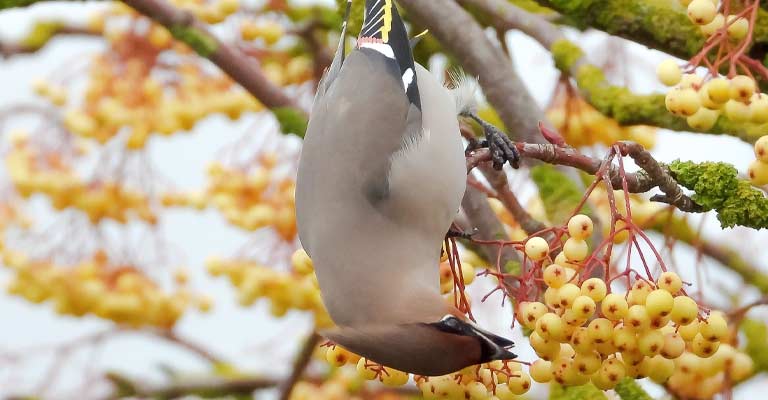
To entice Cedar Waxwings to your garden, consider planting a variety of trees and shrubs that produce berries throughout the year. Some excellent choices include serviceberry, dogwood, elderberry, and hawthorn.
These plants not only provide a natural food source but also offer suitable nesting sites.
Maintaining a Year-Round Food Source
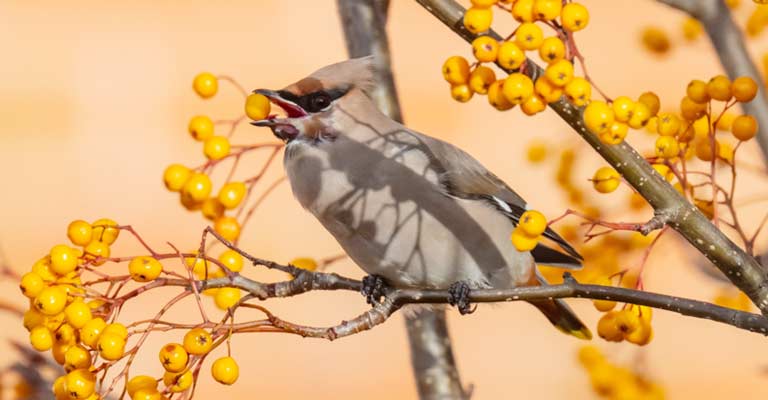
Cedar Waxwings are more likely to frequent your garden if there is a consistent supply of food. Plan your garden layout to ensure a continuous bloom of berries and fruits across different seasons.
This strategic approach can make your garden an attractive destination for Cedar Waxwings year-round.
Creating a Water Feature
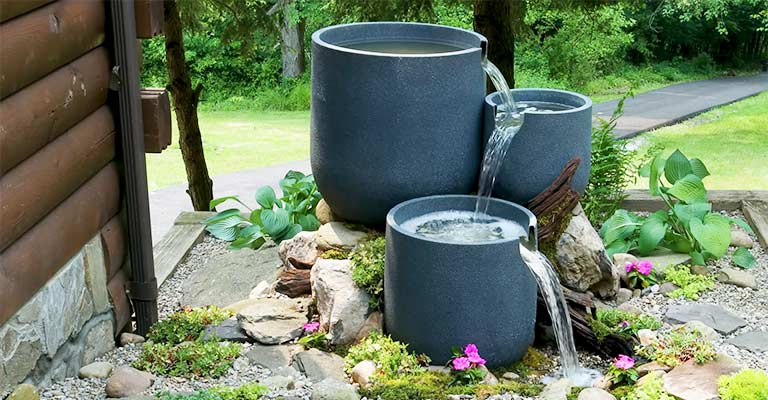
Like many birds, Cedar Waxwings are drawn to water sources. Installing a bird bath or a small fountain can provide not only a place for them to drink but also an opportunity for bathing.
Ensure the water feature is easily accessible and regularly cleaned to maintain a welcoming environment.
Offering Insect-Friendly Spaces

While Cedar Waxwings primarily feed on fruit, they also enjoy insects, especially during the breeding season.
Create a balanced ecosystem by incorporating plants that attract insects, such as flowering plants and shrubs. This not only provides an additional food source but also supports the overall health of your garden.
Minimizing Pesticide Use
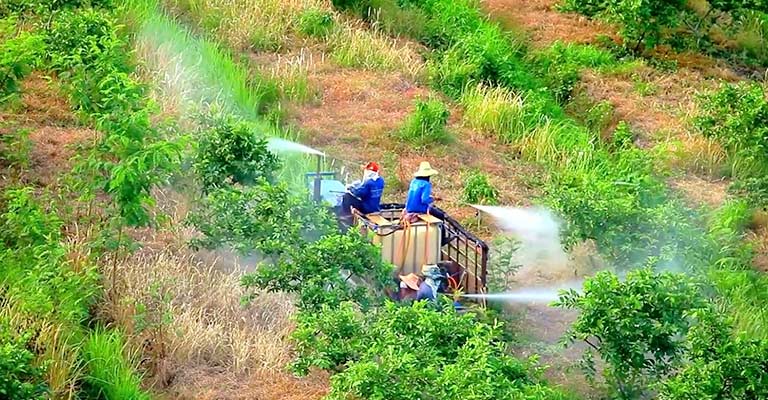
To encourage Cedar Waxwings and other beneficial birds, minimize the use of pesticides in your garden. Pesticides can harm not only the insects Cedar Waxwings feed on but also the birds themselves.
Opt for natural and bird-friendly pest control methods to maintain a healthy environment.
Installing Nesting Boxes
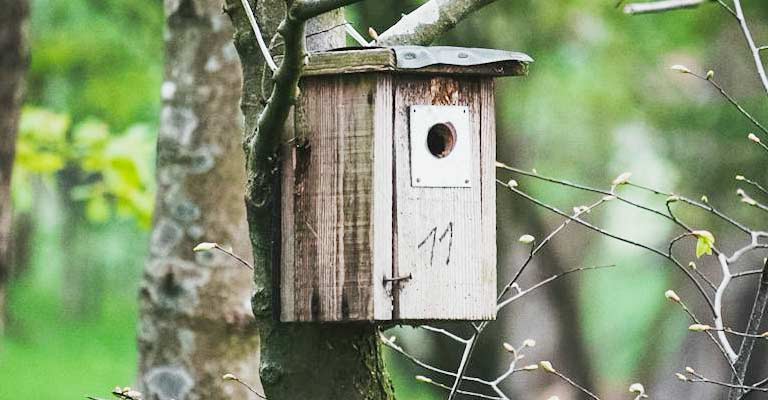
Cedar Waxwings are social birds that often nest in loose colonies. While they may not use traditional birdhouses, you can provide suitable nesting spots by installing open platforms or ledges. Place these in a quiet and undisturbed area to give Cedar Waxwings a safe space to build their nests.
Using Decoys and Bird Calls
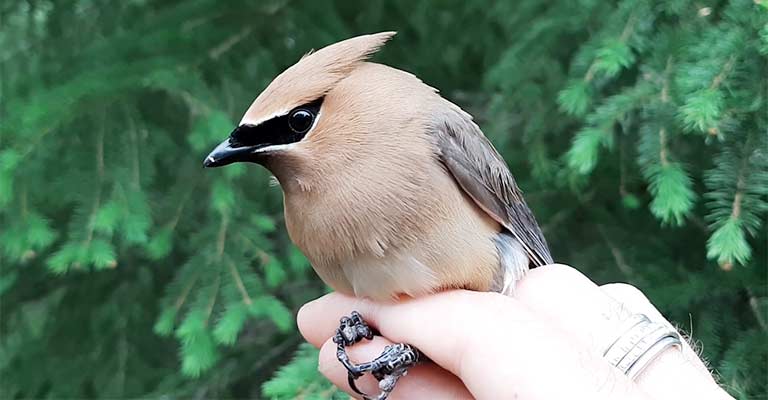
To enhance the allure of your garden, consider using decoys or playing recorded Cedar Waxwing calls. These visual and auditory cues can attract passing flocks, encouraging them to explore and linger in your garden.
However, use these methods sparingly to avoid overwhelming the birds.
Observing from a Distance
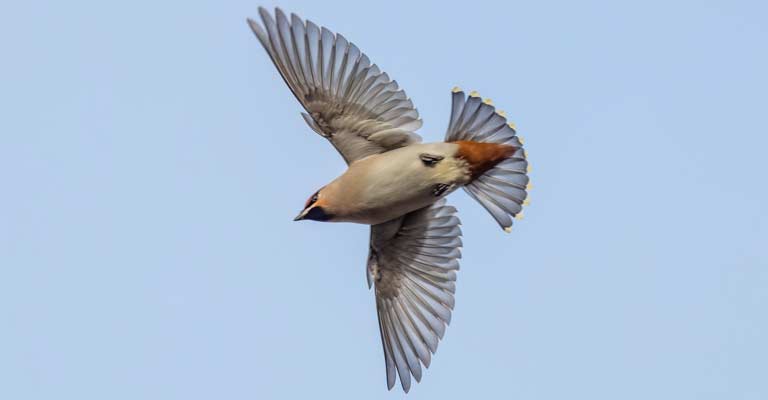
Once your garden is set up to attract Cedar Waxwings, practice patience and enjoy observing them from a distance.
Cedar Waxwings are relatively tolerant of human presence, but excessive disturbance may drive them away. Use binoculars or a camera with a zoom lens to get a closer look without causing any disturbance.
Recording Observations
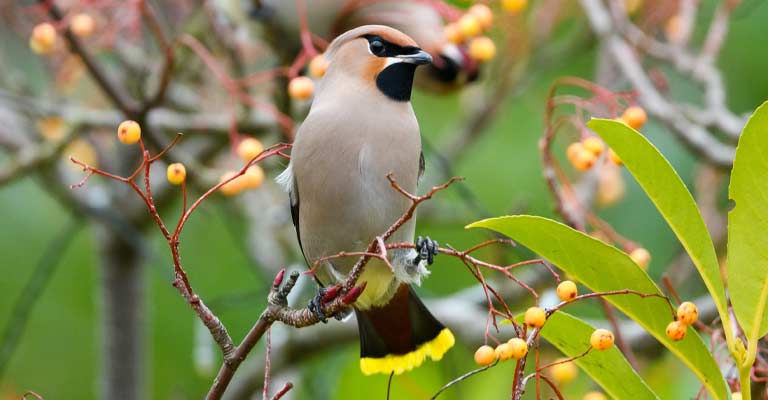
Keep a journal or use a birding app to record your observations of Cedar Waxwings in your garden. Note their behaviors, the types of berries they prefer, and any patterns you observe.
This information can be valuable in refining your garden setup and understanding the specific needs of these beautiful birds.
Sharing Your Experience
Celebrate your success in attracting Cedar Waxwings by sharing your experience with fellow bird enthusiasts. Connect with local birding communities, share photos, and exchange insights on creating bird-friendly gardens.
Your passion for creating a welcoming space for Cedar Waxwings can inspire others to do the same.
Where Are Cedar Waxwings Most Common?
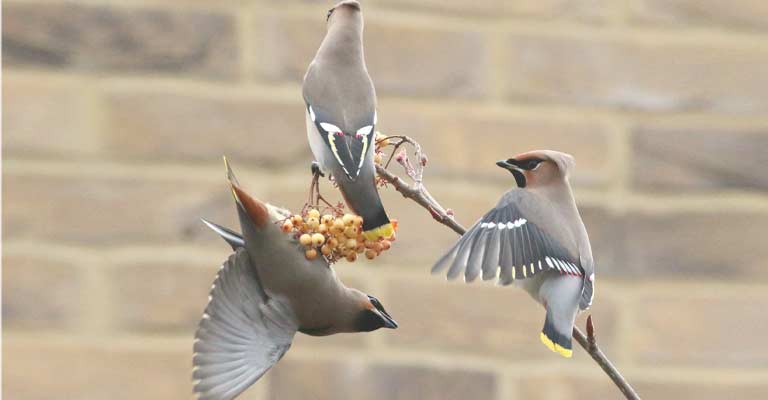
Cedar Waxwings (Bombycilla cedrorum) are highly adaptable birds found across a vast geographical range in North America. These elegant birds are known for their distinctive appearance, marked by a sleek combination of brown, gray, and yellow tones.
Understanding the geographical distribution of Cedar Waxwings can provide insights into the varied habitats they inhabit and aid in creating bird-friendly environments.
Here’s a closer look at where Cedar Waxwings are most common:
North America a Diverse Range
Cedar Waxwings are native to North America and can be found throughout the continent, from southern Canada to northern Mexico. Their widespread distribution is a testament to their adaptability to diverse environments.
Whether in urban areas, suburban neighborhoods, or rural landscapes, Cedar Waxwings can be observed in a variety of settings.
Woodlands and Forested Areas
In their natural habitat, Cedar Waxwings are often associated with woodlands and forested areas. They thrive in deciduous and mixed forests, where they can find an abundance of berries and insects.
These environments provide not only food sources but also suitable nesting sites in the form of open platforms or ledges on trees.
Shrublands and Open Country
Cedar Waxwings are versatile in their habitat choices and can also be found in shrublands and open country. In these areas, they are attracted to the presence of fruit-bearing shrubs, such as juniper and hawthorn, which make ideal feeding grounds.
Open spaces allow them to display their agile flight as they move between foraging locations.
Urban and Suburban Environments
One of the fascinating aspects of Cedar Waxwings is their adaptability to human-altered landscapes. They are commonly spotted in urban and suburban areas where ornamental trees and shrubs, including those found in gardens and parks, offer a variety of berries.
Birdwatchers and nature enthusiasts in residential neighborhoods often enjoy the presence of Cedar Waxwings throughout the year.
Migration Patterns
Cedar Waxwings are partially migratory birds, meaning that their movements are influenced by food availability. During the breeding season, they are more likely to be found in northern regions where breeding and nesting occur.
As winter approaches, Cedar Waxwings may migrate southward in search of milder climates and additional food sources. However, the extent of migration can vary, and some populations may remain in their breeding areas year-round if food resources are plentiful.
Favorable Fruit-Bearing Trees and Shrubs
Cedar Waxwings are particularly attracted to areas with abundant fruit-bearing trees and shrubs. Their fondness for the berries of cedar trees, juniper, serviceberry, dogwood, elderberry, and hawthorn influences their distribution.
Gardens and natural areas with these plant species are more likely to attract Cedar Waxwings, creating opportunities for birdwatchers to observe their behavior.
Water Sources
Cedar Waxwings are also drawn to water sources. Bird baths, fountains, and other water features can enhance the appeal of a location to Cedar Waxwings. Providing access to water not only supports their hydration needs but also adds an attractive element to gardens and landscapes.
Why Attract Cedar Waxwings in Your Garden?
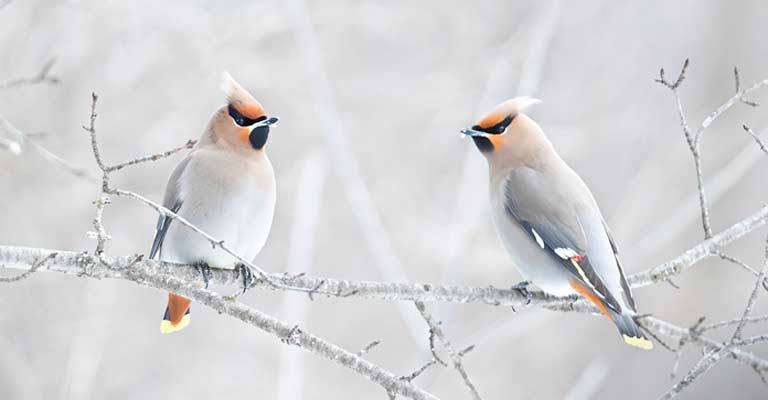
Cedar Waxwings, with their sleek appearance and distinctive markings, add a touch of elegance to any garden. Beyond their aesthetic appeal, these avian visitors offer several benefits to your outdoor space. Let’s explore why attracting Cedar Waxwings to your garden is a delightful endeavor.
Natural Pest Control
Cedar Waxwings are voracious insectivores. By inviting them into your garden, you’re enlisting a squadron of skilled pest controllers. They have a particular fondness for insects such as caterpillars, moths, and beetles.
By keeping these potential garden nuisances in check, Cedar Waxwings contribute to a healthy and thriving ecosystem.
Seed Dispersal Marvels
One of the fascinating roles Cedar Waxwings play is in seed dispersal. Their diet includes various berries and fruits, and as they move from tree to tree, they inadvertently assist in the propagation of plants.
This natural gardening service aids in the regeneration of vegetation and fosters biodiversity within your garden.
Aesthetic Delight
The mere presence of Cedar Waxwings enhances the visual allure of your garden. With their silky plumage, striking black masks, and signature yellow-tipped tails, these birds are a living masterpiece.
Watching them gracefully move through the foliage adds a touch of natural elegance, turning your garden into a sanctuary of beauty.
Charming Vocal Performances
Cedar Waxwings are not just visually stunning; they are also renowned for their melodious calls and unique high-pitched trills. The enchanting sounds they bring to your garden create a harmonious atmosphere.
The symphony of Cedar Waxwing calls intertwines with the rustling leaves and humming insects, transforming your outdoor space into a haven for both eyes and ears.
Social Creatures and Flocking Behavior
These sociable birds often gather in large flocks, creating a captivating spectacle. Their communal nature adds a dynamic element to your garden, fostering a sense of wildlife camaraderie.
Observing their intricate social interactions provides a front-row seat to the wonders of nature, making your garden a hub of avian activity.
Gardening with a Purpose
Attracting Cedar Waxwings invites you to be more intentional in your garden planning. By incorporating plants that produce berries and fruits favored by these birds, you create a symbiotic relationship.
Your garden becomes a purposeful space, offering sustenance to wildlife while reaping the rewards of a well-balanced and flourishing ecosystem.
FAQs
What types of berries do Cedar Waxwings prefer?
Cedar Waxwings have a particular affinity for berries from various plants. They are especially drawn to the fruit of cedar trees, juniper, serviceberry, dogwood, elderberry, and hawthorn.
Do Cedar Waxwings eat anything other than fruit?
While Cedar Waxwings primarily feed on fruit, they also consume insects, especially during the breeding season. By incorporating plants that attract insects, such as flowering varieties, into your garden, you provide a diverse diet for Cedar Waxwings and support a balanced ecosystem.
Can I use traditional birdhouses to attract Cedar Waxwings?
Cedar Waxwings typically do not use traditional birdhouses for nesting. Instead, they prefer open platforms or ledges for nesting. If you’re interested in providing nesting spots, consider installing these types of structures in quiet and undisturbed areas of your garden.
Are Cedar Waxwings social birds?
Yes, Cedar Waxwings are social birds that often travel and nest in loose colonies. They are known for their gregarious behavior, and you can enhance their attraction to your garden by creating a welcoming environment that accommodates their social nature.
How can I discourage Cedar Waxwings from flying away when I approach my garden?
Cedar Waxwings are relatively tolerant of human presence, but sudden movements or disturbances can cause them to fly away. To observe them more closely, use binoculars or a camera with a zoom lens from a respectful distance.
Conclusion
Inviting Cedar Waxwings into your garden is not only a testament to your appreciation for nature but also a harmonious way to coexist with these charming avian visitors.
By incorporating the tips and insights shared in this guide, you’ve laid the groundwork for a bird-friendly haven that beckons Cedar Waxwings to grace your outdoor space.
As you revel in the joy of witnessing these elegant birds partake in the delights of your garden, remember that your efforts contribute to the conservation of local ecosystems.
So, whether you’re a seasoned birdwatcher or just starting to explore the wonders of the avian world, the presence of Cedar Waxwings in your garden adds a touch of magic to your surroundings.
Embrace the beauty of nature, and may your garden forever echo with the melodious calls and graceful flights of these remarkable birds.